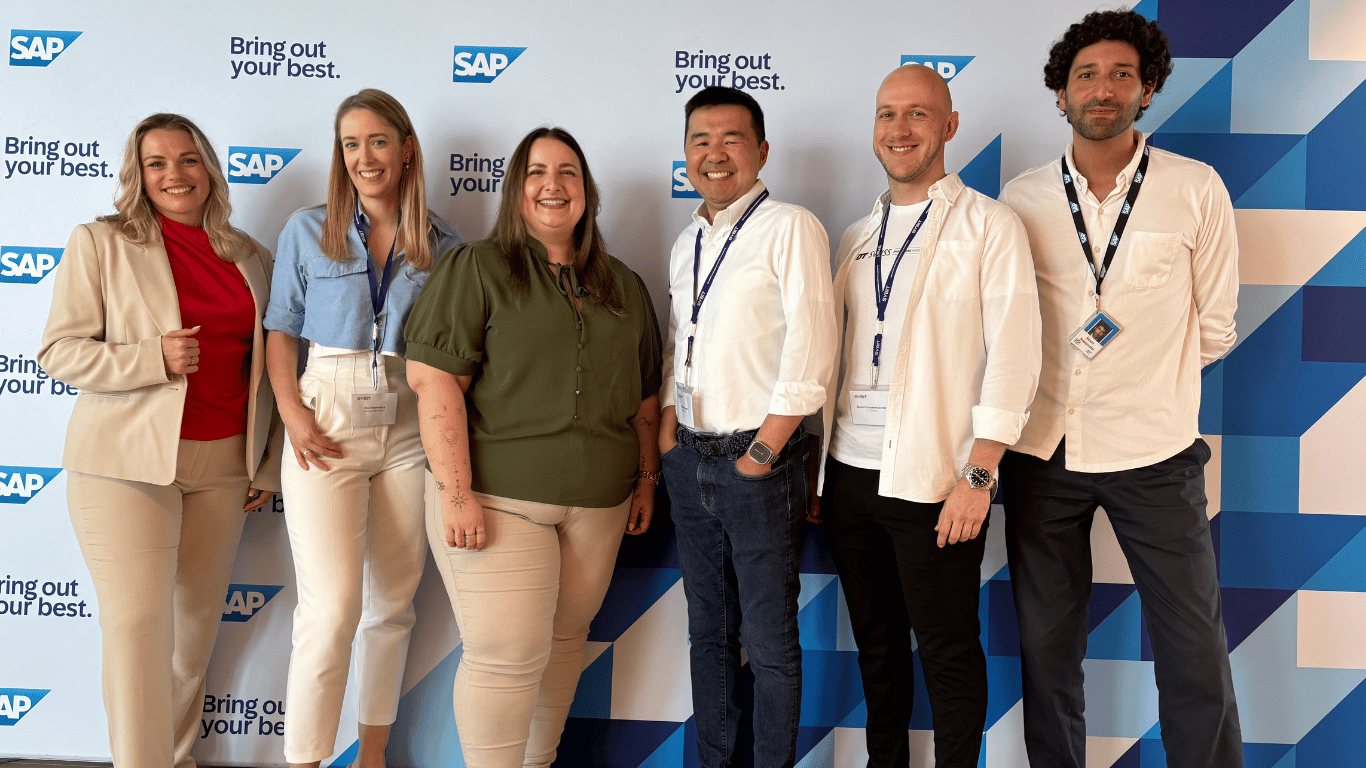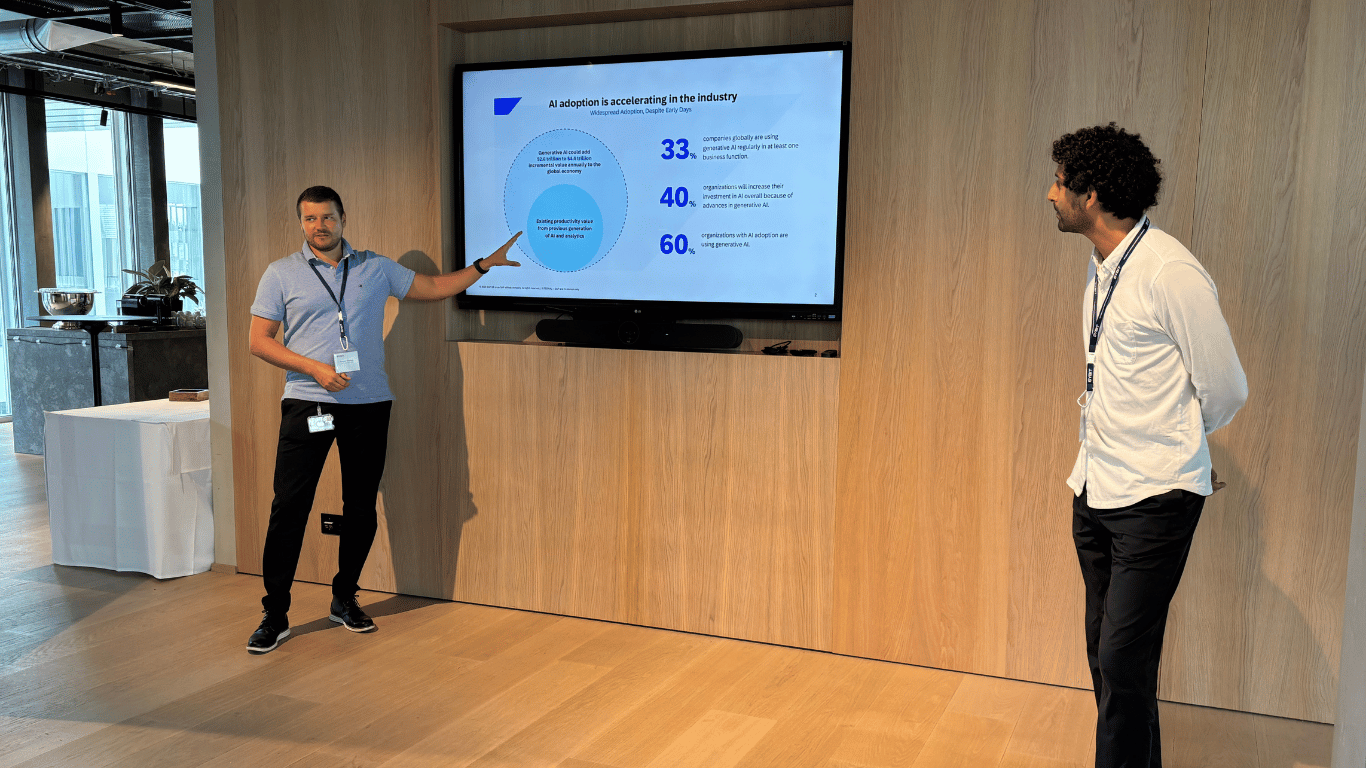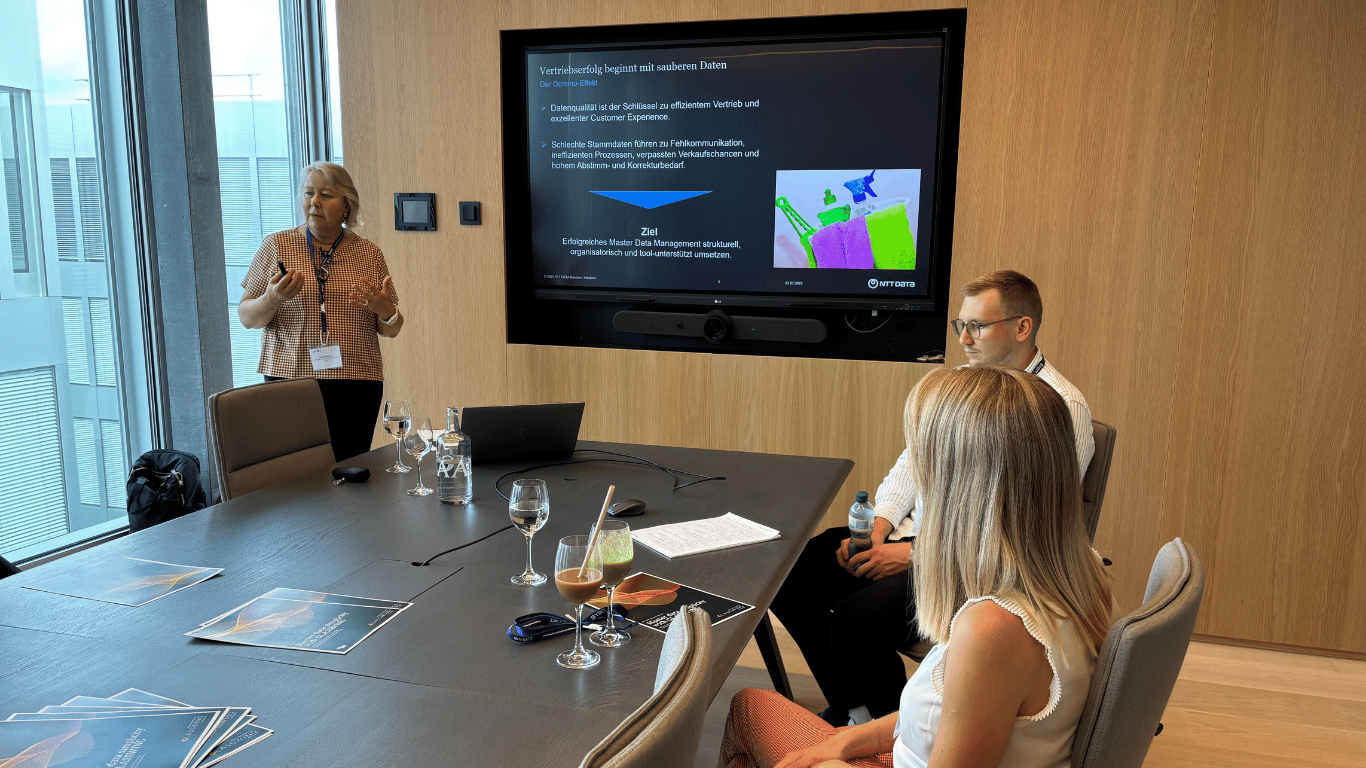Focus. Automation. User Centricity.
Three key levers for achieving fast CX value were the central themes of the talks and breakout sessions:
1. Standardization
Standardization lays the foundation for scalability, maintainability, and efficiency.
- DT Swiss demonstrated how consistent use of SAP standard features – such as dashboards, surveys, and reports – leads to stable processes and high user adoption.
- The migration to SAP Sales & Service Cloud V2 also showed that standardized migration paths (e.g., greenfield or hybrid) enable predictable, low-risk transformations.
2. Automation
Targeted automation reduces manual effort, accelerates processes, and improves data quality.
- snapADDY demonstrated how visit reports via Voice AI and real-time data maintenance lead to more efficient lead processes.
- NTT DATA presented GLASSWING, a tool that enables near-complete automation of master data management via rule-based workflows and smart validations.
- In SAP Service Cloud, AI-powered features such as automatic ticket classification can automate up to 70% of service tasks.
3. User Centricity
Technology only delivers value when it aligns with user needs.
- Clariant introduced a new eCommerce portal based on SAP Commerce Cloud, delivering intuitive UX, fast search functions, and transparent ordering processes – with high adoption from customers and internal teams.
- Several sessions highlighted: User centricity starts with the project structure – with cross-functional teams, iterative feedback loops, and clear communication.
The Day in Detail
Customer Experience with Substance – Strategies for Sustainable Transformation
Franziska Heinig, SYBIT
The opening keynote focused on the strategic relevance of CX. Today’s B2B purchasing processes are heavily digital – companies must align their sales and service processes accordingly. The talk demonstrated how standardization, AI, and user centricity interact to sustainably improve CX.
Highlights:
- 75% of the purchase process is complete before sales interaction
- Digital self-service increases buying loyalty – hybrid models build trust
- CRM systems as strategic platforms for data-based decisions
Breakout 1.1: Successful Migration to SAP Sales & Service Cloud V2
Saskia Cempel, SYBIT
This session focused on migration strategies from SAP Sales & Service Cloud V1 to V2. Topics included project models, technical execution, and change management – enriched with concrete lessons learned from customer projects.
Highlights:
- Comparison of greenfield, brownfield, and hybrid approaches
- Success factors: stakeholder involvement, clear goals, iterative execution
- Use of SAP BTP for extensions and integration
Breakout 1.2: Rethinking Customer Experience – Real-Life Use of AI and Automation
Thomas Ofenloch & Sasan Naservafai, SAP
This session showcased current applications of AI in sales and service – from ticket classification to lead qualification. The SAP CX AI Toolkit and Joule were central to the discussion.
Highlights:
- 70% automation in ticket classification
- 50% efficiency gains for service agents
- AI-powered features like Lead Booster and Account Synopsis
Standard Features as a Key: DT Swiss with SAP CX
David Grossenbacher, DT Swiss
DT Swiss demonstrated how a strong focus on SAP standard functions leads to stability, scalability, and efficiency. The solution is iteratively developed based on business needs.
Highlights:
- Emphasis on SAP standard rather than custom development
- Key user model with clear responsibilities
- Close collaboration with SYBIT as a success factor
Breakout 2.1: snapADDY Meets SAP Sales Cloud
Eva Steinmetz, snapADDY
This session showed how automated lead capture and data maintenance work together in snapADDY and SAP Sales Cloud. The focus was on sales efficiency and data quality.
Highlights:
- Digital visit reports using Voice AI
- Automated duplicate check and data enrichment
- Digital business card solution for modern sales teams
Breakout 2.2: Master Data Management as a Success Factor
Doris Brandt & Pascal Sommer, NTT DATA Business Solutions
MDM was positioned as a strategic enabler for sales and service. GLASSWING was presented as a solution combining governance, automation, and usability.
Highlights:
- Role model with data owner, steward, and architect
- Automated maintenance via rule-based workflows
- Intuitive UI for decentralized data maintenance
Digital Channel Transformation at Clariant
Gustavo Kume, Clariant
Clariant presented the implementation of a global eCommerce portal based on SAP Commerce Cloud, with a focus on speed, user adoption, and strong internal anchoring.
Highlights:
- Agile implementation with early go-live and fast ROI
- Integration of multiple systems into one central platform
- Success factor: strong involvement of operational stakeholders
Conclusion: CX is not a project – it’s a strategic process
XBOOST Day Switzerland 2025 made it clear: Customer Experience is a strategic topic with operational relevance. Success requires clear principles. The event showed that standardization, automation, and user centricity are not abstract ideas – they are concrete success factors for modern CX initiatives.
The presented projects – across sales, service, and eCommerce, from migration to AI – demonstrated how these principles are applied in practice. The XBOOST Day provided not only inspiration but also actionable recommendations – from system architecture to operational execution. The combination of customer experiences, technological insights, and best practices made the event truly valuable for all participants.


